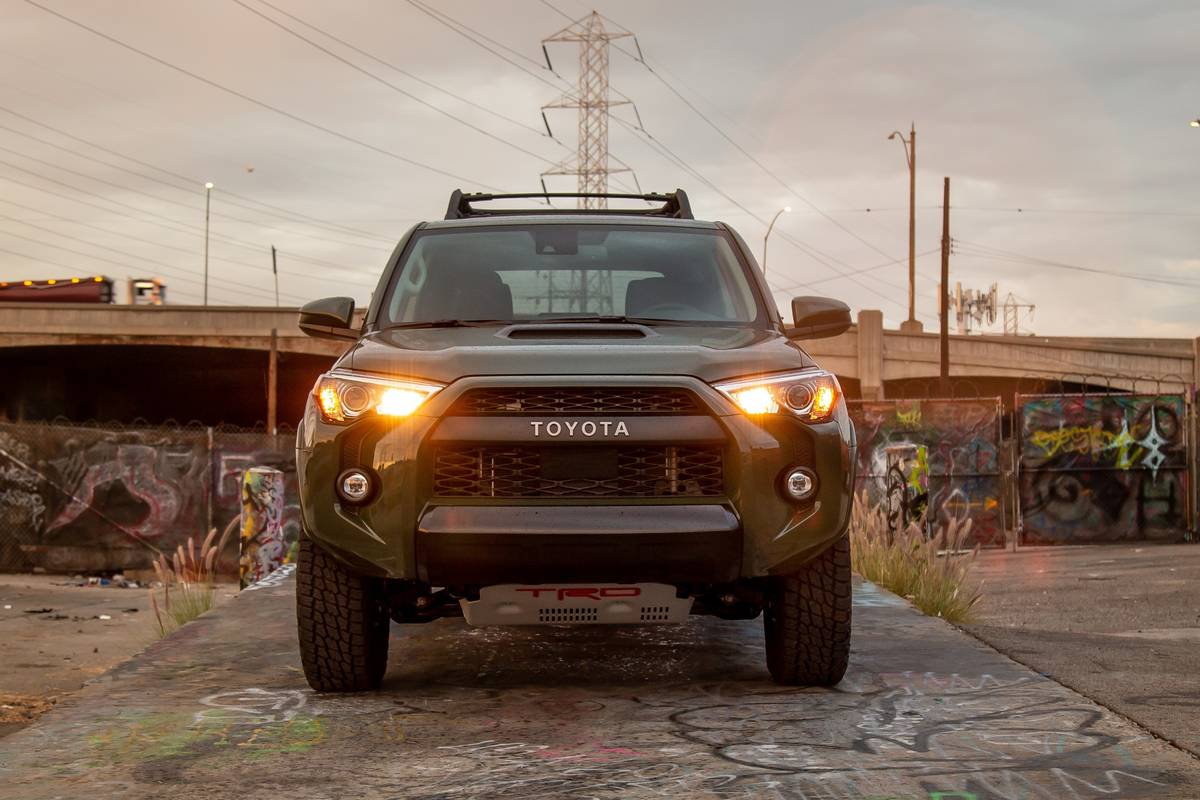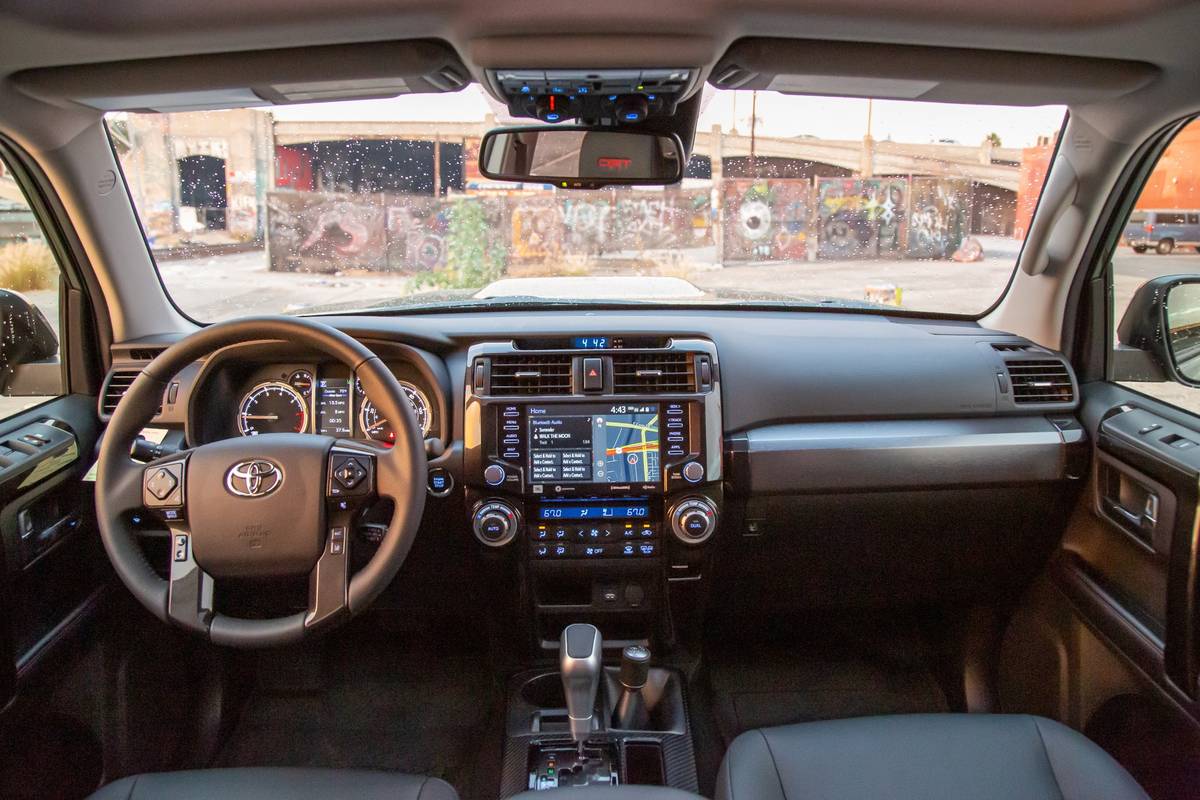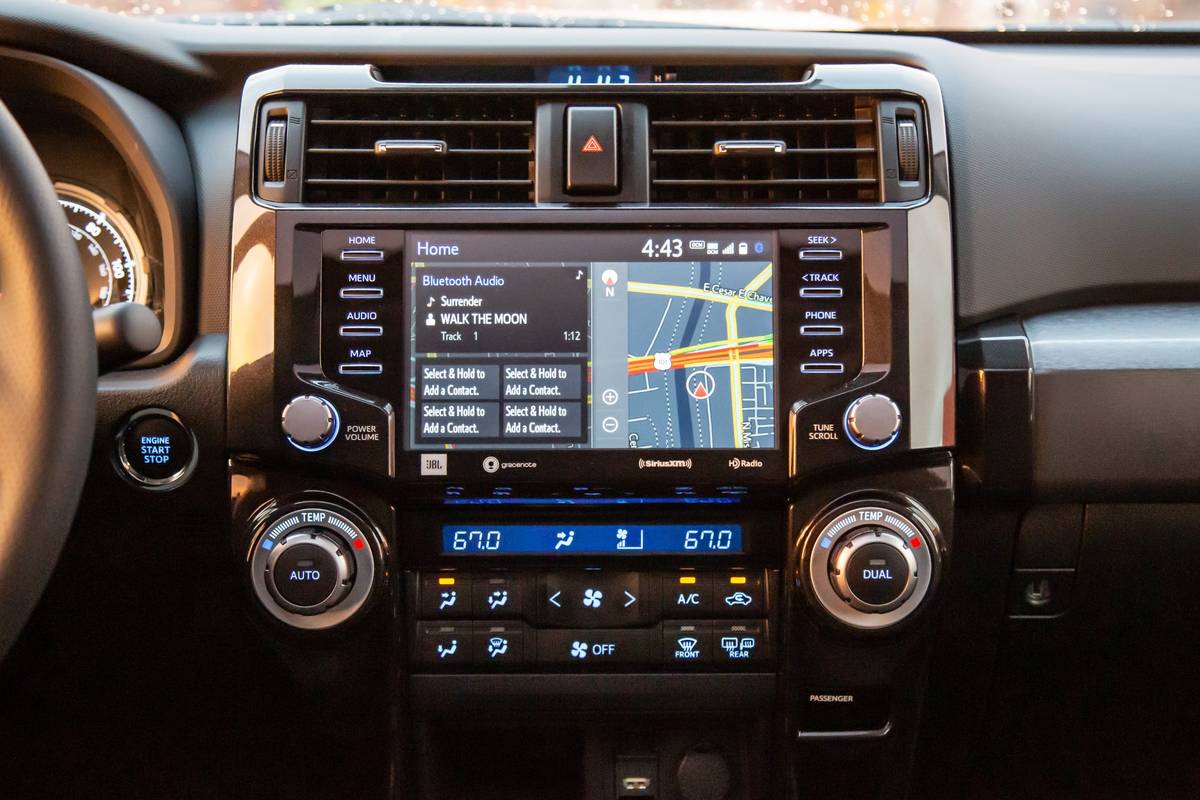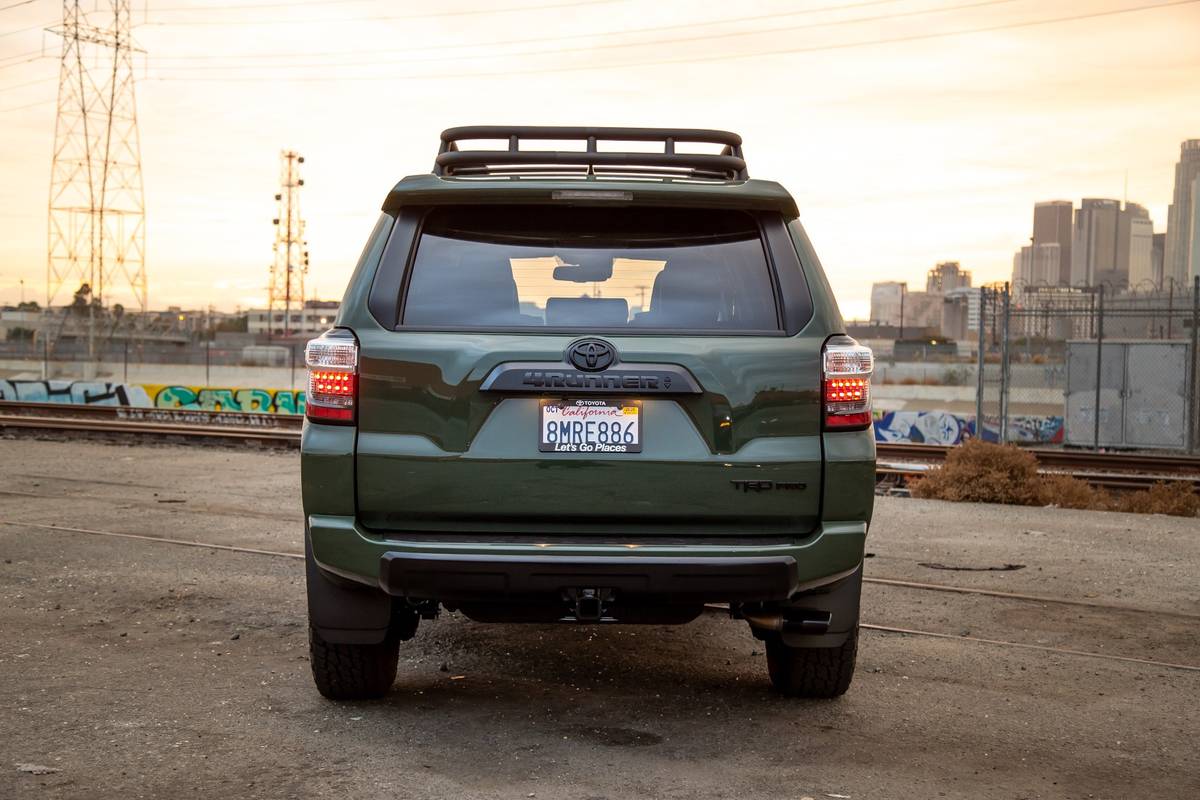2020 Toyota 4Runner: 5 Pros and 4 Cons

Toyota has given its 4Runner several updates for 2020, bringing this SUV’s rugged looks and off-road capability into the new decade.
Related: 2020 Toyota 4Runner Review: At Home Where the Sidewalk Ends
- ${price_badge()}
- ${ami_badge()}
- ${battery_badge()}${ev_report_link()}
- ${hot_car_badge()}
- ${award_badge()}
- ${cpo_badge()}
${price_badge_description}
${ami_badge_description}
The EV Battery Rating is based on this vehicle's current expected range relative to the vehicles expected range when new. ${battery_badge_text}
This vehicle is certified pre-owned, backed by a manufacturer warranty, and typically undergoes a rigorous multi-point inspection to ensure quality and reliability.
This vehicle is currently in high demand given its competitive price, desirable features, and overall condition, and may have a higher chance of selling quickly.
Shop the 2020 Toyota 4Runner near you


The Toyota 4Runner is an old-school, off-road SUV. Among its few direct competitors are the Jeep Wrangler Unlimited and Jeep Grand Cherokee. Boasting serious built-in adventure prowess and room inside for the whole family, the 4Runner stands out. In some ways, however, old-school is starting to feel a little outdated, especially when it comes to the powertrain and fuel economy figures.
Looking for a top-to-bottom evaluation of the 4Runner? Read Cars.com’s Jennifer Geiger’s full review through the related link above. For the short list of hits and misses, here are the pros and cons of the 2020 Toyota 4Runner:
Pros
1. Off-Road Optimized
It’s pretty evident just by looking at it: The Toyota 4Runner is made to go off-road. A part-time four-wheel-drive system, selectable locking rear differential and two-speed transfer case with Low range are all standard on the TRD Pro trim, which is especially optimized for adventure. The Crawl Control electronic traction control system and Active Traction Control system are also standard on the TRD Pro. So is Toyota’s Multi-Terrain Select traction control system, which has settings that can be adjusted based on the terrain — dirt, sand, rock, snow and more.

2. Good in Bad Conditions
An added perk of the 4Runner’s off-road chops is that it handles bad weather and poor road conditions well. The tall driving position helps visibility in snow or sleet. The SUV also deals well with slick road conditions. On sunny weather days, its soft suspension can carry you over speed bumps and potholes without too much jostling.
3. More Standard Safety
The Toyota Safety Sense-P suite of driver assistance and safety technology is standard on the 4Runner, which took a while to catch up to other Toyota vehicles in this area. The package features automatic emergency braking, lane departure and sway warnings, automatic high-beam headlights and adaptive cruise control.
4. Modernized Tech
Another area where the 4Runner needed to play catch up is tech, which is greatly improved for 2020. An 8-inch multimedia touchscreen replaces last year’s 6.1-inch screen. Also, Apple CarPlay and Android Auto are newly standard, making this one of the last Toyota vehicles to adopt smartphone integration systems. The multimedia system as a whole seems intuitive and easy to use.

5. Roomy Interior
The 4Runner is really big on the inside. It has room for five or seven passengers in either two- or three-row seating configurations. In the two-row version, three car seats can fit across the bench, which is unusual for SUVs. (Read the full 4Runner Car Seat Check here.) In the cargo area, a sliding cargo deck can support up to 440 pounds for easier access to heavy items. The rear window can also be lowered to access cargo without opening the liftgate. There’s 47.2 cubic feet of space behind the back row, but if you fold down the 60/40-split seats, you get an amazing 89.7 cubic feet in the non-TRD Pro versions.
More From Cars.com:

Cons
1. Feels Clunky on the Road
As previously mentioned, the 4Runner is really made for off-roading, so putting it on the pavement can be awkward at best. Its standard 270-horsepower, 4.0-liter V-6 engine is slow to come to life from a stop. And on the highway, you can really feel how heavy the SUV is in its reluctance to accelerate. The five-speed automatic transmission doesn’t help that cause, either. The 4Runner has a fairly large turning circle, which makes it quite difficult to park. It also handles oddly on the road; there’s a lot of pitch and lean, which makes corners feel sloppy.
2. Poor MPG
Another issue created by the 4Runner’s weight and outdated five-speed transmission is EPA-estimated fuel economy figures that seem equally dated: 16/19/17 mpg city/highway/combined for the rear-wheel-drive version.
3. Loud Exhaust
If you insist on having a 4Runner for mostly on-road use, the exhaust may seem quite loud. The TRD Pro’s cat-back exhaust is supposed to put out a powerful growl; in reality, it sounds more like a groan.

4. Tall Ground Clearance
With most vehicles, we often note whether it will accommodate taller passengers and drivers, but with the 4Runner, it’s shorter drivers who should beware. The 9.6 inches of ground clearance make for a step-in height that may feel too tall for comfort. Kids especially may have a hard time climbing up into the backseat.
Cars.com’s Editorial department is your source for automotive news and reviews. In line with Cars.com’s long-standing ethics policy, editors and reviewers don’t accept gifts or free trips from automakers. The Editorial department is independent of Cars.com’s advertising, sales and sponsored content departments.
Featured stories



